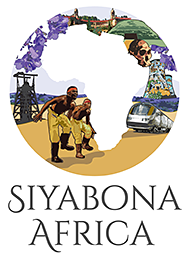
The Cradle of Humankind is a World Heritage Site that is situated about 50 kilometres (31 miles) north of Johannesburg in South Africa. Come and discover where we all come from and learn about our ancient ancestors. You can see their fossilised remains and the tools that they created.
The Cradle of Humankind is widely considered to be the place where humankind originated. This is because it contains several sites that have produced the largest number as well as the oldest hominid fossils ever found. The Cradle of Humankind covers over 47,000 hectares and has over thirteen excavation sites. The sites have revealed more about our origins than any other sites to date.The Maropeng Visitor Centre
Visitors can go to the Maropeng Visitor Centre which houses a world class exhibition on human origins and the development of humans over the past few million years. You can see fossilised hominid remains and exhibitions of early Stone Age tools.
The main focus of the Centre is on the Tumulus Building which was built to resemble a giant burial mound from the front, while the back is modern and futuristic to represent human progress. The building houses many interactive displays, as well as a restaurant and the Maropeng Boutique Hotel.
One of the highlights of a tour of the Centre is going on an interactive underground boat ride that takes you on a journey back through human history. The exhibition is highly interactive and can take between one and seven hours, depending on your level of interest.
Due to the interactive nature of the exhibitions a trip to the Maropeng Visitor Centre is ideal for the whole family.
The Sterkfontein Caves
The Sterkfontein Caves are the most famous caves in the Cradle of Humankind. The Sterkfontein Caves alone have produced over a third of all the hominid fossils ever found. The Sterkfontein Caves are home to the oldest and longest paleaontological dig in the world which was started in the early 1930's.
The digs have produced famous fossilised Australopithecus skeletons such as "Mrs Ples" and "Little Foot" which are considered to be the precursors of modern humans Homo sapiens. At the Sterkfontein Caves From raised walkways you can look down at the excavation site where world-acclaimed fossils have been discovered as well as exhibitions explaining their importance.
You can also see another site near the Sterkfontein Caves where a collection of 270 burnt bones were discovered and this is thought to reveal how our ancestors learnt to master fire more than a million years ago. This was a major development in our evolution and technological advance.
Recent Discoveries - Australopithecus Sediba
In 2008 American and South African palaeo-anthropologist Lee R. Berger was mapping the caves in the Cradle of Humankind. In the process of this project he discovered over 500 new caves in the lime-stone hills. He identified a previously unexplored area of caves not ffar from one of his original dig sites.
Lee R. Berger returned on the 15th of August with his 9 year old son Matthew and a colleague. Matthew was the one who discovered a fossilised bone - a hominid clavicle which turned out to belong to a juvenile male whose skull was later discovered.
A total of four skeletons have been recovered from this site and it has been proposed by Berger that these skeletons belong to a missing link in human evolution and he named the species Australopithecus Sediba.
The work is still continuing, and there are many caves that are as yet unexplored. Who knows what secrets they may contain and what they may reveal. The Cradle of Humankind is well worth a visit. It is a place where you can contemplate where do we come from and glimpse far back into history.
The displays are very informative and interactive and you can easily spend a whole day trying to take it all in.

